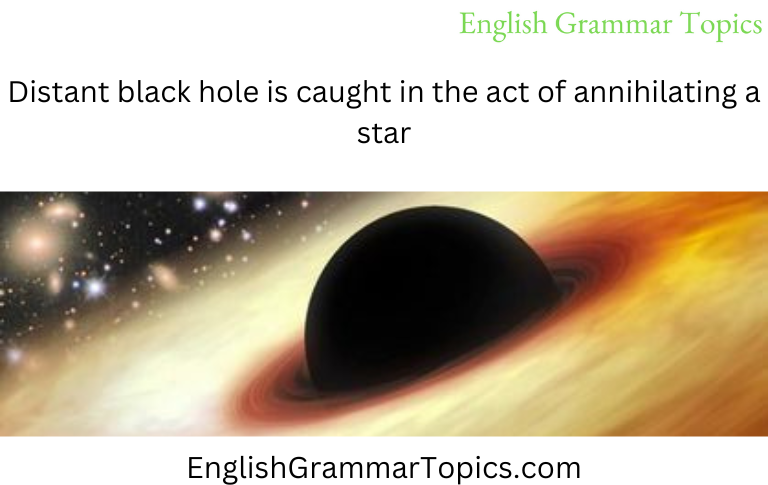More than halfway across the known universe, astronomers have observed an act of tremendous violence as a black hole rips apart a star that got too close to this celestial savage. But this was not your typical case of a hungry black hole.
It was one of just four instances—and the first one since 2011—of a black hole being seen tearing apart a passing star in a phenomenon known as a tidal disruption event before ejecting brilliant jets of high-energy particles into space in opposite directions. And it was the most distant and brilliant such occurrence ever observed.

In research that were published in the journals Nature and Nature Astronomy on Wednesday, astronomers described the event. A supermassive black hole estimated to be hundreds of millions of times as large as our sun and located about 8.5 billion light-years from Earth looks to be the culprit. 5.9 trillion miles is the distance that light travels in a year, or a light year (9.5 trillion km).
Igor Andreoni, principal author of one of the studies and an astronomer at the University of Maryland and NASA’s Goddard Space Flight Center, stated, “We think that the star was similar to our sun, probably more massive but of a common kind.
Through the Zwicky Transient Facility astronomical survey, the event was discovered in February using a camera mounted on a telescope at the Palomar Observatory in California. The Very Large Telescope of the European Southern Observatory in Chile was used to determine the distance.
According to University of Minnesota astronomer and study co-author Michael Coughlin, when a star dangerously approaches a black hole, it is violently torn apart by the black hole’s gravitational tidal forces. “This is similar to how the moon pulls tides on Earth, but with greater strength,” he said. (Watch the tidal disruption incident animation.)
The star’s fragments are then gathered into a rapidly spinning disc revolving around the black hole. Eventually, what is left of the dying star in the disc is absorbed by the black hole. When the tidal disruption event happens, large jets of material are occasionally blasted in opposing directions in extremely unusual circumstances, which we estimated to be 100 times more uncommon, Coughlin continued.
According to Andreoni and Coughlin, the black hole was probably rotating quickly, which may have contributed to how the two potent jets were propelled into space at nearly the speed of light.
Dheeraj Pasham, an astronomer at Massachusetts Institute of Technology and the study’s lead author, said the team was able to monitor the occurrence just one week after the black hole began engulfing the dying star.
Even while tidal disruption events are found by researchers roughly twice a month, jet-producing ones are incredibly uncommon. Doppler boosting, which is a phenomenon equivalent to amplifying the sound of a passing police siren, is an effect that causes one of the jets emerging from this black hole to appear to be directed toward Earth, making it appear brighter than if it were moving in another direction.
Much like the Milky Way and most galaxies, the supermassive black hole is thought to be located at the centre of a galaxy. However, the tidal disruption event was so intense that it blocked out the stars of the galaxy. The source shone brighter than 1,000 trillion suns at its brightest, according to Pasham.
